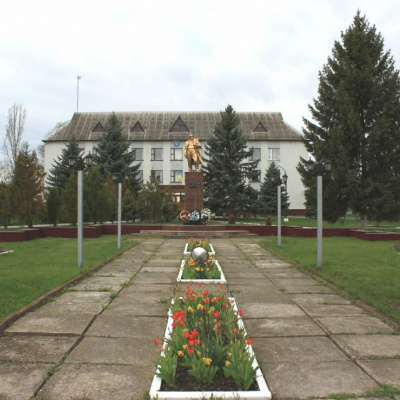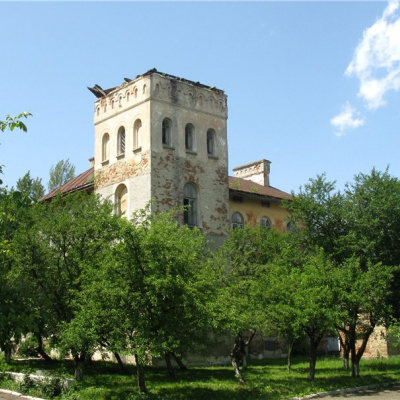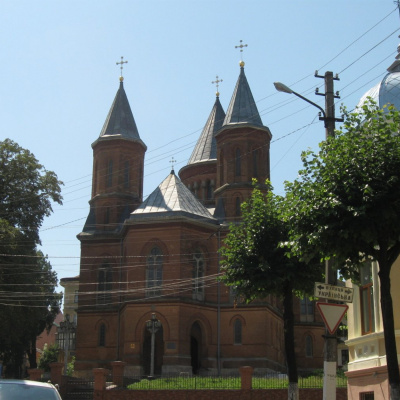Hlybotskyi district
Hlyboka district is located in the southern part of Chernivtsi region. The district borders Romania in the south, Storozhynets district in the west, and Hertsaiv district in the east of Chernivtsi region. By the nature of the relief, it belongs to the foothill zone and is located in the Prut-Siret interfluve. Hlyboka district is rich in wooden architectural monuments. On its territory, the oldest temples of the hut type, which are characteristic of Bukovyna and northern Moldova, have been preserved. Along with wooden churches, valuable monuments of stone architecture have been preserved: in the first quarter of the nineteenth century, domed churches were built in large settlements, and simpler, domeless churches were built in small villages.
The center of the district is the village of Hlyboka, as well as the settlements of the district: Korovia, Bila Krynytsia, Novyi Vovchynets, Staryi Vovchynets, Tarashany, Verkhni Synivtsi, and Yordanesti.
The district covers an area of 686 square kilometers. It is located 27 km from Chernivtsi. The population is 70.5 thousand people. The largest waterways are the Siret River and its tributary Malyi Siret. There are many botanical natural monuments in the district. The district is dominated by beech forests. Rare plants grow here, such as the common white bottom, Venus's slippers, lunaria reviving, and Heifel's saffron. There are also endemic species (which are not found anywhere else): the floodplain lycopodium and the yellow marshmallow.
The fauna of the area is characterized by both steppe and mountain species. Here you can find a hare, a fox, a jay, a finch, a hawk and a vulture. A significant number of fauna representatives are listed in the Red Book of Ukraine.
The district is also known for its monuments of landscape architecture - Hlybotskyi Park, parks in the villages of Prosokyriany and Petrychantsi, as well as a park-reserve in Karapchiv.
Sacred architecture:
- Vozdvyzhenska church (1903), Molodiya village
- Kozmodemianivska church (XVIII-XIX centuries), Bila Krynytsia village
- St. Nicholas Church and bell tower (1618), wooden; Polyana village
- St. Michael's Church (1908), village Korovia
- St. Michael's Church (1890), Sterche village
- St. Michael's Church (1876), Shyroka Polyana village
- Assumption Cathedral of the Old Believers (1900-1908), Bila Krynytsia village
- The Assumption Church (1894), wooden; Kut Bainskyi village
- Assumption Church (1718), Turyatky village
- Church of the Exaltation of the Holy Cross (1790), wooden; Verkhni Synivtsi village
- Church of the Virgin Mary (1827), Mykhailivka village
- Church of the VirginMary (1900), Staryi Vovchynets village
- Church of Paraskeva (1908), Horbivtsi village
Other attractions and museums:
- Palace of the Skibinetsky family (early twentieth century), Hlyboka
In the second half of the nineteenth century, many lands around Hlyboka belonged to the Sapieha family. In 1892, a Polish nobleman Bronisław Skibniewski bought the estate from Prince Adam Sapieha. It is the name of Mr. Skibniewski that is associated with the architectural face of the town, which has partially survived to this day. Hlyboka remained in the hands of the Skibniewskis until the Second World War. The last owner of the palace was Bronisław's son Oleksandr. Now the Skibniewski Palace houses the district children's hospital. - The manor house (late 19th century), Petrychanka village
- Cemetery-memorial to the victims of the First World War (early XX century), Valia Kuzmina village
- Cherepkivtsi Palace (early XX century), Cherepkivtsi village;
- Museum of the World's Old Art, Bila Krynytsia village;
- Local History Museum, Staryi Vovchynets village.
Natural monuments and protected areas
- Oak of "Stefan the Great", Valia Kuzmina village: according to legend, the oak, which is now over 500 years old, was planted by the Moldovan lord Stefan Mare after the victory over the Polish-Lithuanian army of King Jan Olbrecht. It is said that many oaks were planted at the site of the battle, but only one has survived to this day.
- Petrivetskyi Nature Reserve, Korchivtsi village: established in 1983. The protected tract is represented by natural oak-fir and beech-oak-fir forests that once formed a continuous strip in the Seretsky foothills of Bukovyna. Among the rare plant species listed in the Red Book of Ukraine are the common nesting plant and the ovoid cuckoo's tears. The reserve has the value of a genetic reserve of reference plantations.




